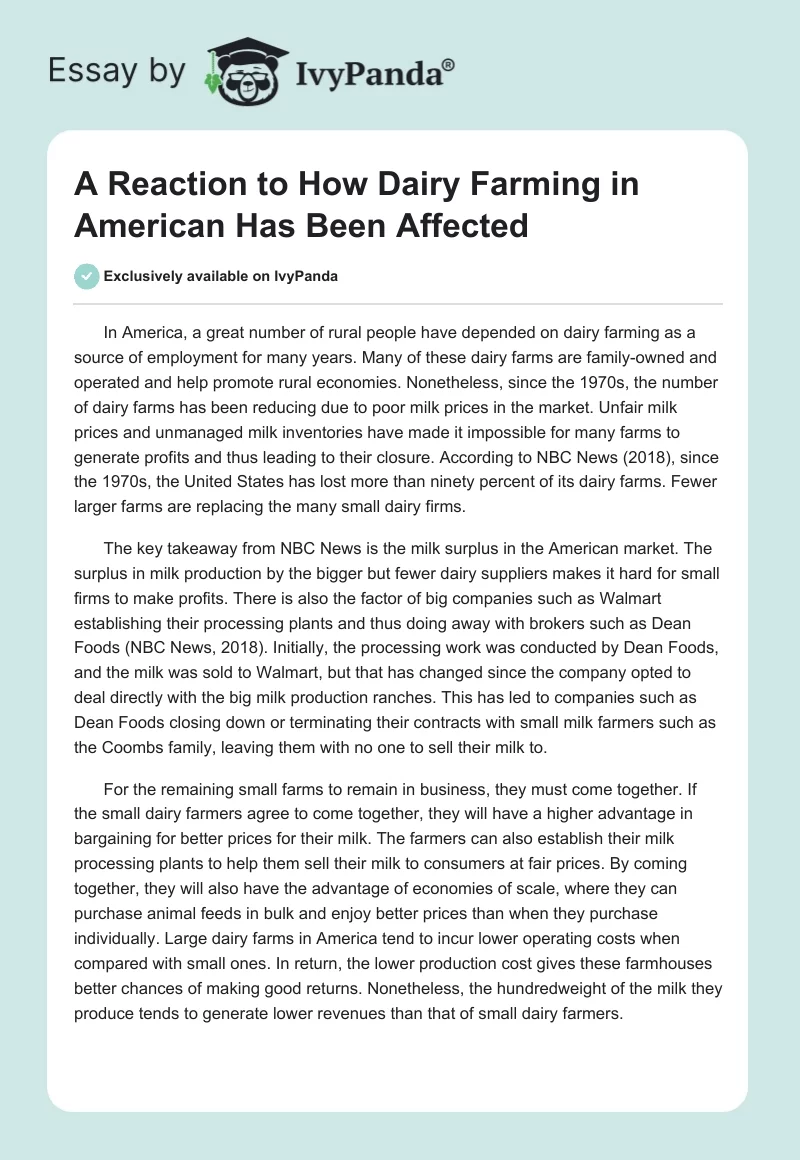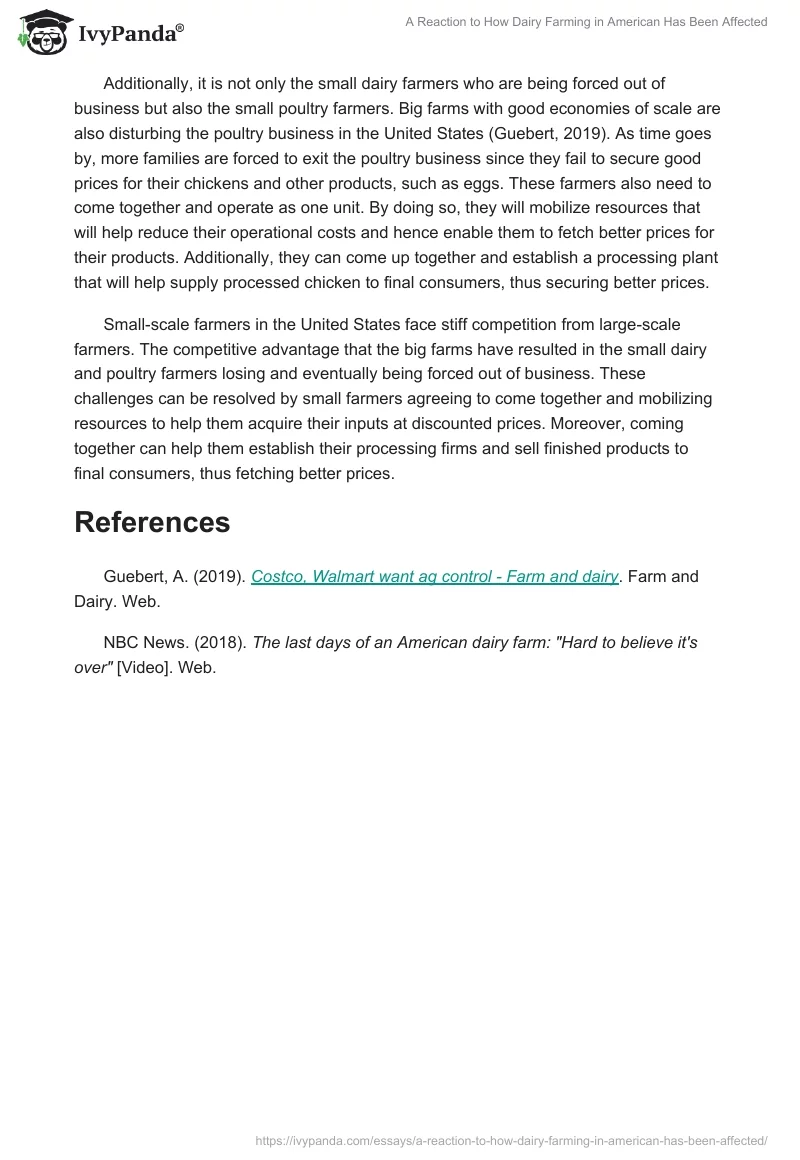In America, a great number of rural people have depended on dairy farming as a source of employment for many years. Many of these dairy farms are family-owned and operated and help promote rural economies. Nonetheless, since the 1970s, the number of dairy farms has been reducing due to poor milk prices in the market. Unfair milk prices and unmanaged milk inventories have made it impossible for many farms to generate profits and thus leading to their closure. According to NBC News (2018), since the 1970s, the United States has lost more than ninety percent of its dairy farms. Fewer larger farms are replacing the many small dairy firms.
The key takeaway from NBC News is the milk surplus in the American market. The surplus in milk production by the bigger but fewer dairy suppliers makes it hard for small firms to make profits. There is also the factor of big companies such as Walmart establishing their processing plants and thus doing away with brokers such as Dean Foods (NBC News, 2018). Initially, the processing work was conducted by Dean Foods, and the milk was sold to Walmart, but that has changed since the company opted to deal directly with the big milk production ranches. This has led to companies such as Dean Foods closing down or terminating their contracts with small milk farmers such as the Coombs family, leaving them with no one to sell their milk to.
For the remaining small farms to remain in business, they must come together. If the small dairy farmers agree to come together, they will have a higher advantage in bargaining for better prices for their milk. The farmers can also establish their milk processing plants to help them sell their milk to consumers at fair prices. By coming together, they will also have the advantage of economies of scale, where they can purchase animal feeds in bulk and enjoy better prices than when they purchase individually. Large dairy farms in America tend to incur lower operating costs when compared with small ones. In return, the lower production cost gives these farmhouses better chances of making good returns. Nonetheless, the hundredweight of the milk they produce tends to generate lower revenues than that of small dairy farmers.
Additionally, it is not only the small dairy farmers who are being forced out of business but also the small poultry farmers. Big farms with good economies of scale are also disturbing the poultry business in the United States (Guebert, 2019). As time goes by, more families are forced to exit the poultry business since they fail to secure good prices for their chickens and other products, such as eggs. These farmers also need to come together and operate as one unit. By doing so, they will mobilize resources that will help reduce their operational costs and hence enable them to fetch better prices for their products. Additionally, they can come up together and establish a processing plant that will help supply processed chicken to final consumers, thus securing better prices.
Small-scale farmers in the United States face stiff competition from large-scale farmers. The competitive advantage that the big farms have resulted in the small dairy and poultry farmers losing and eventually being forced out of business. These challenges can be resolved by small farmers agreeing to come together and mobilizing resources to help them acquire their inputs at discounted prices. Moreover, coming together can help them establish their processing firms and sell finished products to final consumers, thus fetching better prices.
References
Guebert, A. (2019). Costco, Walmart want ag control – Farm and dairy. Farm and Dairy. Web.
NBC News. (2018). The last days of an American dairy farm: “Hard to believe it’s over” [Video]. Web.


